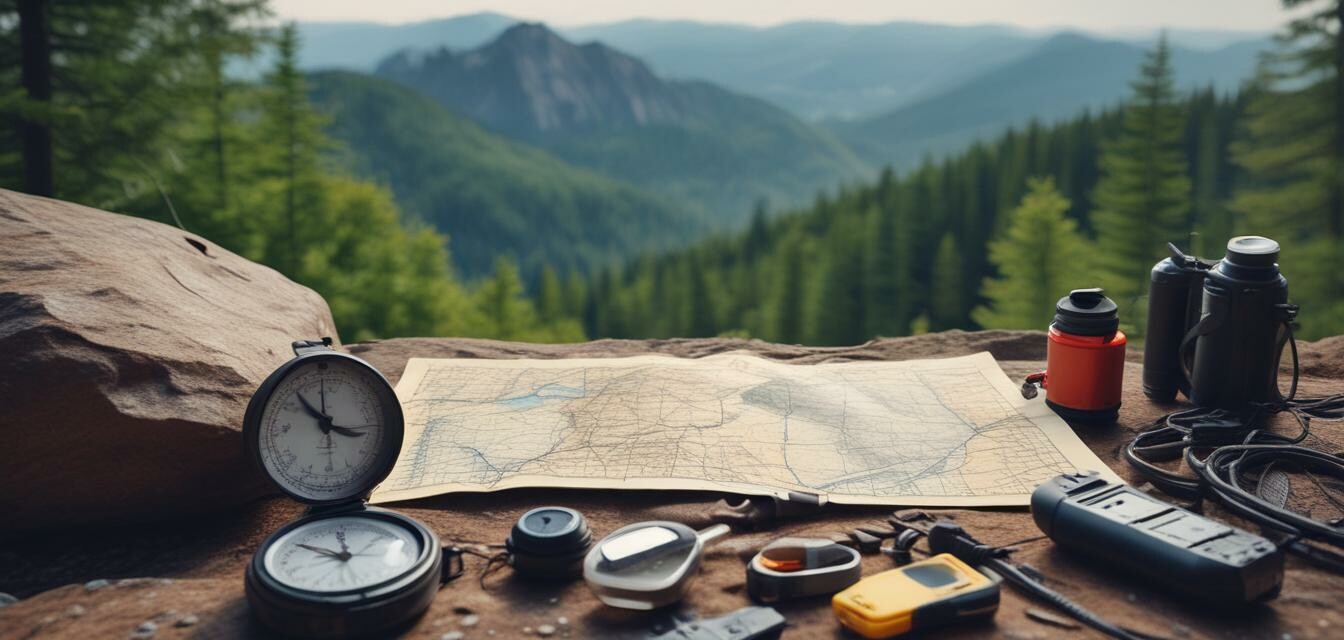
As an Amazon Associate, I earn from any qualifying purchases, at No Extra Cost to You.
Technological Advancements in Navigation for Backpackers
Key Takeaways
- Navigation tools have evolved from traditional maps to advanced GPS devices and mobile applications.
- Modern navigation technology enhances safety and efficiency for backpackers.
- Choosing the right navigation tool depends on individual preferences, trip types, and comfort with technology.
- Integration of offline maps and user-friendly interfaces make navigation easier in remote areas.
- Staying current with evolving technology is essential for all backpacking enthusiasts.
Backpacking is not just about hitting the trails; it’s about exploring the great outdoors with confidence, knowing that you can navigate through different terrains safely. Technological advancements in navigation tools have revolutionized how backpackers plan and execute their adventures. From high-tech GPS devices to versatile mobile applications, these advancements have made it easier for adventurers to find their way. In this article, we will explore various technological trends in navigation for backpackers and how they can enhance your outdoor experience.
The Evolution of Navigation Tools
Historically, backpackers relied on physical maps and compasses to navigate through unknown territories. While these tools are still valuable, the advent of technology has reshaped the landscape of navigation.
| Traditional Tools | Modern Tools |
|---|---|
| Physical maps | GPS devices |
| Compasses | Smartphone apps |
| Landmarks | Satellite imagery |
| Trail markers | Geocaching devices |
Types of Navigation Technologies
Backpackers now have a variety of navigation technologies at their disposal:
- GPS Devices: Handheld GPS units that provide real-time location tracking and route assistance.
- Smartphone Apps: Applications that offer features like offline maps, tracking options, and points of interest.
- Smartwatches: Wearable tech that allows for map access and navigation while keeping your hands free.
- Drones: A newer trend that uses aerial imagery to scout trails and get an overview of the terrain.
- Augmented Reality (AR): Apps that superimpose navigation elements onto the real-world view through the smartphone camera.
Advantages of Using Modern Navigation Tools
As we weigh the pros and cons of these modern tools, it’s essential to consider their benefits:
Pros
- Increased accuracy and real-time updates.
- Easy access to offline maps and navigation assistance.
- Ability to track and share your location with others for safety.
- User-friendly interfaces that reduce the learning curve.
- Integration with other outdoor apps for a comprehensive adventure experience.
Cons
- Dependence on battery life and potential for device failure.
- Data signal availability can affect functionality, especially in remote areas.
- Over-reliance on technology may lead to a lack of traditional navigation skills.
The Rise of Mobile Navigation Applications
Smartphone applications have become crucial for modern backpackers. Here’s how they enhance navigation:
- Offline Capability: Many apps allow downloading maps to avoid connectivity issues.
- Customization: Users can set waypoints, mark locations, and create custom routes.
- Social Integration: Share trails and experiences with a community of fellow backpackers.
- Integration with Wearables: Sync your phone with smartwatches for easy access to navigation without taking your phone out.
For more information on choosing the right apps, check our Buying Guides.
Safety Considerations
Despite the numerous advantages that modern navigation tools provide, it’s crucial to remember:
- Always carry a backup navigation tool like a map and compass.
- Make sure your devices are fully charged before heading out.
- Understand how to use the tools effectively before relying on them in the field.
- Educate yourself about the technology and its limitations.
Beginner Tips for Using Navigation Technology
- Familiarize yourself with your device on shorter trips before a lengthy backpacking tour.
- Always download maps while you have a strong Wi-Fi signal.
- Practice charging your devices smartly using portable chargers.
- Take map reading and compass navigation classes to supplement your tech skills.
Future Trends in Navigation for Backpackers
The future looks promising for navigation technology in the backpacking community. Anticipated trends include:
- Increased accuracy in GPS systems with new satellite technology.
- Greater integration of navigation tools with user activities and social feedback.
- Advancements in battery technology for longer-lasting devices.
- Growth in community-driven mapping and navigation updates.
The landscape of backpacking is ever-evolving, and staying informed about the latest trends is essential. For more insights into backpacking trends, visit our Backpacking Trends section.
Conclusion
Technological advancements in navigation tools for backpackers provide unparalleled resources for safe and efficient exploration of nature. Whether you prefer GPS devices, mobile applications, or even traditional methods, understanding the benefits and limitations of these tools is vital for your outdoor adventures. With proper preparation and knowledge of the latest technologies, you can confidently navigate the trails and immerse yourself in the beauty of the great outdoors.